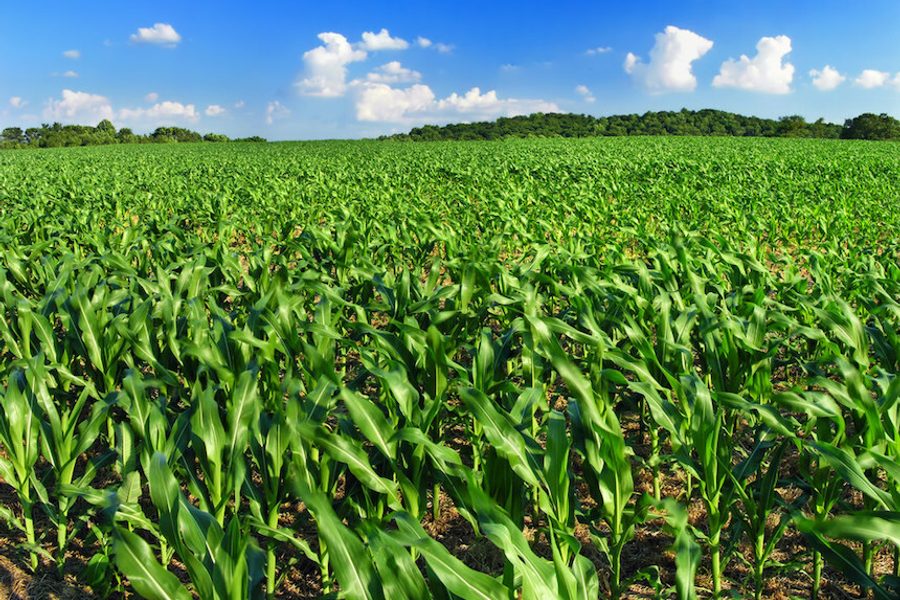To Upend Corporate Agriculture, Americans Need to Understand Basic Farm Policy
Mark Willsey

Nearly all of Trump’s electoral wins were in rural districts, many of which are made up of farming communities. This is where Trump thrived. I have seen it firsthand: I have lived in the city, worked in manufacturing and I’m now a farmer in a small farming town in Central Illinois.
For the progressive movement to make inroads in communities like mine, it needs to put forward a serious plan for how the U.S. government can stop subsidizing corporate farms and instead return the land to small family farmers who work the land. Farmers should not have to farm 20,000 acres of rented land just to make a living.
To move toward a future in which progressives are able to put forward such a plan, it’s crucial for everyone in this country — including city dwellers — to gain a basic literacy about the agricultural shifts that have taken place in the United States and what it would take to move away from corporate agriculture on a mass scale.
Traditional farming
For over 200 years, the farming business model hasn’t changed. We rely on a simple two-crop system of corn and soybeans. For a time, this system worked well for farmers. There was an established market for the product; the methods were proven. There have been improvements in machinery over the years that have increased efficiency. There have been developments in seeds and planting techniques that have changed over time out of need and to improve yield. The biggest change that has come to farming is the rise of big farms. This, along with the two-crop system is where the trouble comes in for the future of farming and the economics of farming.
I live in an area that some say has the best ground anywhere in the world, not just the country. But on this land, there are virtually zero crops grown for human consumption, and therein lies one of our problems.
Most corn and soybeans go to feed cows and pigs for the world’s ever-increasing appetite for meat. The Food and Agriculture Organization of the United Nations estimates that 40 percent of the world’s cropland goes to produce livestock feed and 80 percent of the total agriculture land. In the United States, 39.1 percent of corn goes to livestock feed, 98 percent of the soybean crop is used for livestock feed. Another 30.3 percent of the corn crop goes toward ethanol production, while 12.5 percent is exported.
The benefits and concerns of ethanol production from corn is up for much debate. Recent studies show that it takes as much energy to make ethanol as it creates. The use of this much cropland to create fuel instead of growing much-needed food raises many ethical issues. Most of the remaining corn that is not used for livestock feed or ethanol is used to make corn syrup.
Cows do not naturally process corn, and it turns out, corn syrup is not great for humans either. Farm animals have been bred over the years to deal with the food we give them, and it has required more and more chemicals to keep them healthy on this diet. Cows, pigs, chickens and turkeys would all be better off if they were allowed to graze naturally for their food. All this fertile land is being wasted on feeding animals food that they would be better off without, rather than feeding humans food that we desperately need.
This doesn’t explain the economic problem of farming, but this does show where progressive thinking is needed to lead to a growing economy in rural communities. There is opportunity and there is need.
Problems with big ag
Where the economic problems have risen is where the scales have gotten larger. I work on a large farm. We farm around 20,000 acres of corn and soybeans. There are about 12 of us who work on the farm, and we earn a medium income. For us, it’s a good living compared to others in the field; we are happy. Most of our spouses work outside the home, but that’s what it takes now to raise a family.
That all seems reasonable and good until you think about how those 20,000 acres probably no more than 30 years ago provided a living for more than 100 families. That is over 100 jobs lost, families without an income just on the farms we work. This reality is painfully evident in the acres we farm: every 100-acre field we go to surrounds an old abandoned farmhouse.
There are little towns of usually no more than 100 people that we drive through on our way to the next field, with old dilapidated homes. The only business in town is a grain elevator. The elevator will usually have one manager, a secretary and one or two seasonal workers. The farming business model that is over 200 years old has failed these rural communities. If I were to go to any city manager and present the following business plan, it would not go well: “We would like to take 20,000 acres of your most valuable resource and we will employ 10-12 people. We will pay some taxes, but we will need most of it back in subsidies in order to stay in business. We will also need you to make your citizens use our product, even though it’s not good for them.”
This business plan would get you rudely kicked out of most towns, yet this is the agricultural business plan we continue to support with government policy and subsidies.
What is the solution to this? There are no easy solutions, but there are things we could do. I had my own small farm where I raised free-range chickens for eggs. We had, at peak, around 1,000 egg-layers laying around 800 eggs per day. These were happy chickens foraging for their own food. We earned more per acre in one year on our little farm than the big farm I work for now will earn per acre in 30 years. We paid more in taxes per acre in one year than the large farm will pay in 100 years.
A well-managed small organic farm can earn around $40,000 per acre per year. Our little chicken farm was close to this. In contrast, corn and soybean farms earn, on average, $200 net profit per acre per year after all expenses are considered, according to a published report from the Department of Agricultural and Consumer Economics at the University of Illinois. If farmers are renting the land, this year, rental rates are projected to be higher than revenue.
There are many examples of small farms like this that are creating fresh, organic, natural food that people want to eat and that is actually good for them. We can’t expect big farms to change to small farm practices overnight. There is too much invested in the current business model. But we can do things to push for change.
Possible solutions
For one, we can stop subsidizing the current business model of corporate farms — both the two-crop system and the feed-lot livestock system that it supports. The Department of Agriculture (USDA) gives out over $25 billion in subsidies to farming businesses annually; of this, over three-quarters goes to subsidize the top 10 percent of our country’s largest farms, according to the Environmental Working Group. This needs to change. But there needs to be a proven business model that farmers can adapt. There can be a variety. The legalized marijuana growing industry is an example of a skilled labor-intensive crop that could serve as a model for the growing of other crops. It is already the number one grossing crop in California. It is a high-value crop that requires skilled labor to get it ready for market. There are other options as well; scientists have found ways to grow medicine in tobacco plants. Research is being done on diets based on DNA. Livestock could be grazed on fields planted with specific grasses and trees to tailor a specific need or taste. Rotational grazing can increase the efficiency of these fields.
These ideas need to be developed in urban areas where there is a market ready for them, and where there is a critical mass of progressive thinkers and scientists to develop them. Incubators should be created to focus on beneficial farming techniques. There are many examples of successful businesses that create urban farms. These could be small rooftop farms or indoor hydroponic farms. There is a need in the marketplace in urban areas for farm-fresh foods. This is where the progressive new farming ideas can start and have started. Downtown farmer’s markets are very popular already. There could be an incubator to create a full-time farmer’s market business model. Some of the food could be grown directly at the market. As it became successful, nearby farmers could be brought in to supplement the supply of fresh food.
Farmers cannot be expected to do this on their own. They do not have the margins to take risks; they don’t have the time to train workers. We need to create the business plans for them, test them to make sure they work and create the market for the end product. When they are ready, we would need to set up training facilities to train the workers. Then, when everything is ready, we could encourage farmers to adopt these plans. You would have to give them options to start small — say, 100 acres per 1,000 of their acres farmed would need to be converted. For livestock farmers, it would be 10 percent of their herd converted to grazing, and going up from there. There would either be an incentive to do this or a tax if they don’t do it. There would need to be requirements for adding employees, because the whole point of this is to create more jobs in rural communities.
The third equation that needs to be addressed is the ownership of these farms. While it is true that most farms are family-run, much of the land is not family-owned. There are also fewer and fewer families owning these farms. Middle-class farmers have decreased to just 6 percent of total farms, while big farms have increased over 100 percent. According a 2014 USDA farm census study, 40 percent of all farmland is rented or leased from a landlord.
In the Midwest, where the corn rush pushed land values much higher, those rental rates are as high as 60 percent. Most of these landlords are not farming this land. The land has been placed in family trusts in order to pass the land to the next generation. This is not really a bad thing; it is an important tool for farmers to be able to keep their land. Many of the younger generation have moved away from the farm and are not interested in farming but still enjoy the profits from the farm. The rental arrangement for landlord-managed lands tends to favor consistent income. There are no arrangements for investing in the land itself and no opportunities for innovative developments. The same USDA farm census estimates that only 10 percent of U.S. farmland will transfer ownership in the five years following the study. Only a small percentage of this will be transferred to a non-relative. This, along with the high cost of land, will make it difficult for small farmers to get started in the business of farming.
Buying the Farm
We need to create a method to return our land to the small family farmers who work the land. Farmers should not always have to work on rented land. There should be incentives for people to obtain land to do some of these innovative farming techniques. Much like cities that give tax abatements to encourage innovative companies to invest in their community, rural areas could give tax breaks to small farms that create jobs and innovate. It would be in local and state governments’ best interest to invest in these small innovative farms that can create new jobs and higher incomes, rather than mega-farms that are operating on efficiencies that are removing jobs and income.
The plight of the family farm is no small issue. Progressives cannot afford to ignore this segment of the country. Our land is the one resource we have that cannot be outsourced to another country. We need to take full advantage of this resource and we need to do it in a way that resists corporate exploitation and puts money back in the hands of farmers themselves.
“Why Progressives Should Care About U.S.cor Agricultural Policy” was originally published on Truthout and is reposted on Rural America In These Times with permission. This article may not be reprinted without permission.




